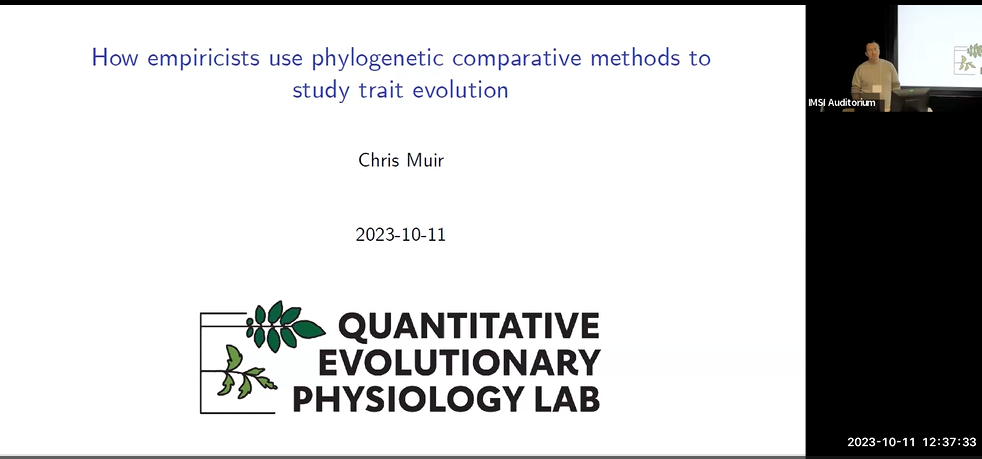How empiricists use phylogenetic comparative methods to study trait evolution
Presenter
October 11, 2023
Event: 41707
Abstract
Evolutionary convergence among lineages toward similar traits in similar circumstances is powerful evidence for biological adaptation, the exquisite fit of organisms to their environment caused by natural selection. Comparative methods allow biologists to test for convergence by comparing traits and other factors among extant lineages. Phylogenetic comparative methods (PCMs) arose in the 1980s out of recognition that nonindependence among lineages due to shared ancestry could result in statistical overconfidence in the evidence for convergence. One way to account for nonindependence adopted by many PCMs is to use phylogenies to predict the expected covariance among lineages due to shared ancestry. For continuous traits, the expected covariance is derived from stochastic diffusion models that embed assumptions about the evolutionary process. PCMs have progressed from using simpler to more complex models, aided by large increases in phylogenetic data and computational resources. More complex models not only include more biologically realistic assumptions, but expand the realm of questions that PCMs address. Today PCMs not only test for convergence, but instead address a wide variety of hypotheses about the tempo and mode of evolution. Larger data sets, increased sophistication of models, and better parameter estimation methods have contributed to widespread adoption of PCMs by empiricists. Despite this progress, there are unresolved fundamental issues that probably deserve more theoretical treatment, such as identifiability, parameter interpretation, model adequacy, models of complex traits, and model comparison. Future work will hopefully expand what we can learn using PCMs and identify epistemic limits to what can learn about the past when sampling is limited to extant lineages.
